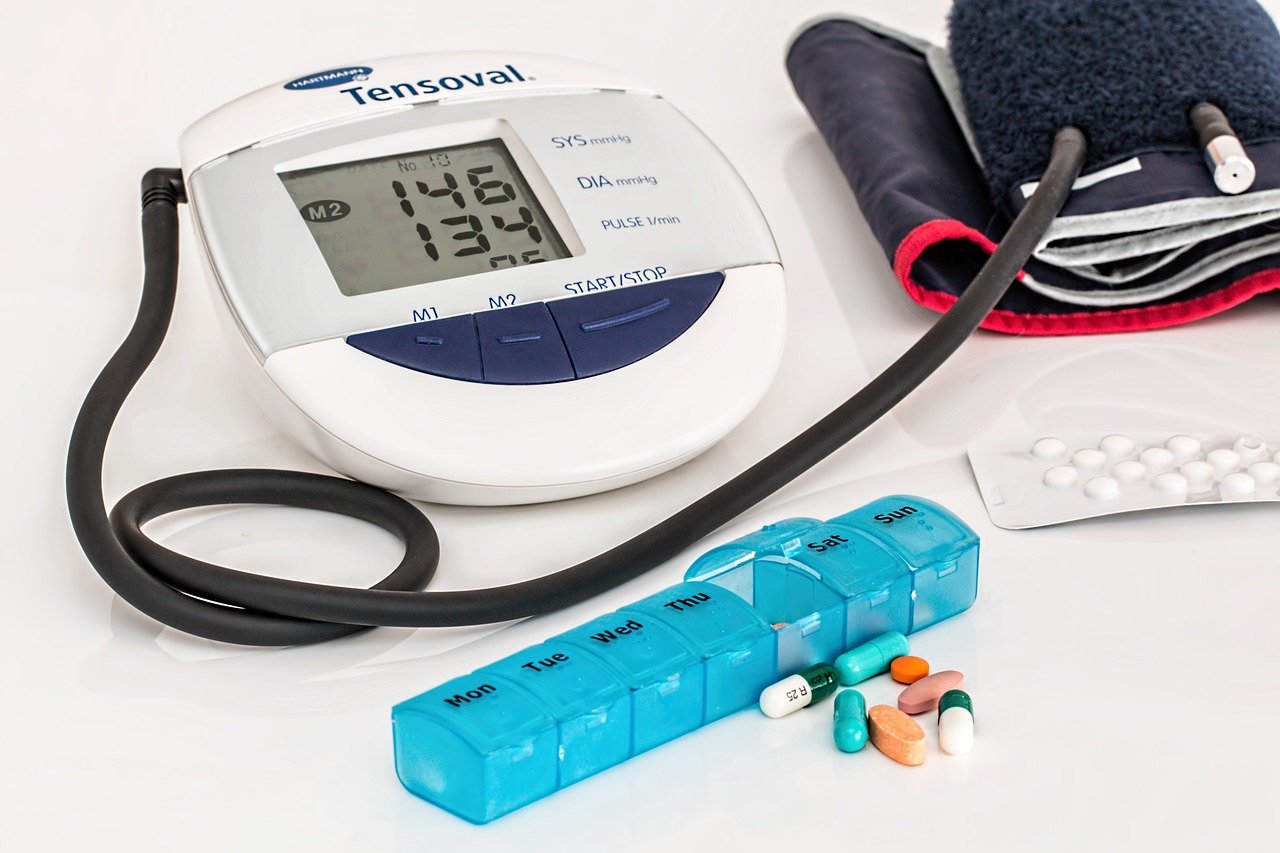Top Exercises: That Burn the Most Calories Fast and Effectively (2024)

Introduction
Burning calories effectively is a key goal for many individuals aiming to lose weight, improve fitness, or maintain a healthy lifestyle. Understanding which exercises burn the most calories can help you design a workout routine that maximizes your efforts and delivers the best results. This article explores high-calorie burning exercises, factors affecting calorie burn, and tips for optimizing your workouts.
Understanding Calorie Burn
What is Calorie Burn?
Calorie burn refers to the energy expenditure of your body during physical activities. Calories are units of energy that our body needs to perform basic functions and physical activities.
Factors Affecting Calorie Burn
- Intensity: Higher-intensity exercises lead to greater calorie burn.
- Duration: Longer workout sessions generally burn more calories.
- Metabolic Rate: A faster metabolism increases calorie burn.
- Age and Gender: Age and gender can affect metabolic rate and calorie expenditure.
Basal Metabolic Rate (BMR)
Your Basal Metabolic Rate (BMR) is the number of calories your body needs to maintain basic physiological functions while at rest. Understanding your BMR helps in tailoring your exercise routine and dietary needs for effective calorie management.
High-Calorie Burning Exercises
When it comes to burning calories, certain exercises stand out for their effectiveness. These high-calorie burning exercises engage multiple muscle groups, boost cardiovascular health, and improve overall fitness. Here, we explore some of the top exercises that burn the most calories.
Running
Whether you prefer running outdoors or on a treadmill, this high-intensity cardio workout engages multiple muscle groups and significantly boosts cardiovascular health.
- Calories Burned: Approximately 600-1000 calories per hour, depending on speed and body weight.
- Benefits: Improves cardiovascular health, builds lower body strength, enhances endurance, and boosts mental health.
- Tips: Incorporate interval training, such as alternating between sprints and jogging, to increase calorie burn.
Cycling
Cycling, whether done outdoors or on a stationary bike, is another excellent way to burn a substantial amount of calories. It is particularly effective for strengthening the lower body muscles and enhancing cardiovascular fitness.
- Calories Burned: Around 500-1000 calories per hour, depending on intensity and body weight.
- Benefits: Strengthens legs and glutes, improves cardiovascular health, and enhances stamina.
- Tips: Mix up your routine with different terrains or resistance levels to keep your workouts challenging.
Swimming
Swimming provides a full-body workout that is gentle on the joints, making it ideal for individuals of all fitness levels. Different swimming strokes can vary in intensity and calorie burn.
- Calories Burned: Approximately 400-700 calories per hour.
- Benefits: Engages all major muscle groups, improves cardiovascular fitness, enhances flexibility, and is low-impact.
- Tips: Vary your strokes (e.g., freestyle, butterfly, backstroke) to target different muscle groups and keep your workouts interesting.
Jumping Rope
Jumping rope is a high-intensity exercise that is excellent for burning calories and improving coordination, agility, and cardiovascular health. It’s also a convenient workout that can be done almost anywhere.
- Calories Burned: About 800-1000 calories per hour.
- Benefits: Enhances cardiovascular fitness, improves coordination, strengthens lower body muscles, and is highly portable.
- Tips: Incorporate different jump styles, such as single-leg jumps or double unders, to increase the intensity.
High-Intensity Interval Training (HIIT)
- Calories Burned: Around 600-800 calories per hour.
- Benefits: Increases cardiovascular fitness, boosts metabolism, burns calories even after the workout, and can be done with various exercises.
- Tips: Create a HIIT routine that includes exercises like burpees, sprints, and jumping jacks to maximize calorie burn.
Rowing
Rowing, either on water or using a rowing machine, is a full-body workout that engages the upper body, core, and legs. It’s effective for building strength and improving cardiovascular health.
- Calories Burned: Between 500-800 calories per hour.
- Benefits: Strengthens muscles, improves cardiovascular fitness, enhances endurance, and is low-impact.
- Tips: Focus on maintaining proper form to maximize effectiveness and prevent injury.
Boxing
Boxing is a high-intensity workout that combines cardio, strength training, and agility drills. It can be done with a punching bag, in a boxing ring, or even shadowboxing.
- Calories Burned: About 600-800 calories per hour.
- Benefits: Improves cardiovascular health, builds upper body strength, enhances coordination, and boosts mental toughness.
- Tips: Incorporate footwork drills and different punching combinations to keep your workouts dynamic.
CrossFit
CrossFit is a high-intensity workout regimen that combines elements of cardio, strength training, and functional movements. CrossFit sessions are designed to improve overall fitness and performance.
- Calories Burned: Around 500-700 calories per hour.
- Benefits: Builds strength, improves cardiovascular fitness, enhances flexibility, and promotes functional movement.
- Tips: Ensure proper technique and gradually increase the intensity to avoid injuries and optimize results.
Burpees
Burpees are a full-body exercise that combines squats, push-ups, and jumps. They are highly effective for increasing cardiovascular fitness and burning calories.
- Calories Burned: Approximately 10-15 calories per minute.
- Benefits: Enhances cardiovascular health, strengthens muscles, improves coordination, and can be done anywhere.
- Tips: Incorporate burpees into your HIIT routine or use them as a standalone workout for a quick calorie burn.
Mountain Climbing
Mountain climbing, whether on actual mountains or using a climbing machine, is a challenging workout that engages multiple muscle groups and significantly improves endurance.
- Calories Burned: About 600-800 calories per hour.
- Benefits: Builds strength, improves cardiovascular fitness, enhances balance and coordination, and boosts mental resilience.
- Tips: Start with indoor climbing gyms if you are new to the activity and gradually progress to outdoor climbs for added challenge.
Comparing Different Exercises
Different types of exercises offer unique benefits and can be tailored to meet specific needs. Understanding the distinctions between various exercise categories can help you create a balanced and effective workout routine. Here, we compare cardio versus strength training, full-body workouts versus targeted workouts, and outdoor versus indoor activities.
Cardio vs. Strength Training
Cardio Exercises
Cardiovascular exercises, commonly known as cardio, focus on increasing heart rate and improving cardiovascular endurance.
- Examples: Running, cycling, swimming, jumping rope, and rowing.
- Calories Burned: Cardio exercises typically burn more calories during the workout compared to strength training. For instance, running can burn approximately 600-1000 calories per hour, while cycling can burn around 500-1000 calories per hour.
- Benefits: Enhances cardiovascular health, boosts stamina, reduces the risk of chronic diseases, and aids in weight loss.
- Drawbacks: Cardio can be hard on the joints, especially in high-impact activities like running.
Strength Training
Strength training, also known as resistance training, focuses on building muscle mass and strength. It involves exercises that work against resistance, such as weights or body weight.
- Examples: Weight lifting, bodyweight exercises (push-ups, squats), resistance band exercises, and kettlebell workouts.
- Calories Burned: Strength training burns fewer calories during the workout compared to cardio. For example, a typical strength training session burns about 200-400 calories per hour.
- Benefits: Increases muscle mass, boosts metabolic rate, improves bone density, enhances functional strength, and helps in long-term weight management.
- Drawbacks: Burns fewer calories during the workout and may require more equipment and knowledge to perform exercises correctly.
Full-Body Workouts vs. Targeted Workouts
Full-Body Workouts
- Examples: Swimming, HIIT, CrossFit, and rowing.
- Calories Burned: Full-body workouts typically burn more calories. For example, HIIT can burn around 600-800 calories per hour, while swimming burns approximately 400-700 calories per hour.
- Benefits: Provides balanced muscle development, saves time by working out multiple muscle groups in one session, and improves overall fitness.
- Drawbacks: Can be more demanding and may require longer recovery times between sessions.
Targeted Workouts
- Examples: Bicep curls, leg presses, tricep dips, and calf raises.
- Calories Burned: Targeted workouts burn fewer calories compared to full-body workouts. For instance, isolated exercises might burn about 100-300 calories per hour.
- Benefits: Allows for focused muscle development, can correct imbalances, and is useful for rehabilitation and bodybuilding.
- Drawbacks: Burns fewer calories overall and might not improve cardiovascular fitness significantly.
Outdoor vs. Indoor Activities
Outdoor Activities
Outdoor activities offer a range of physical and mental benefits due to the natural environment and varying terrain.
- Examples: Running, cycling, hiking, outdoor swimming, and mountain climbing.
- Calories Burned: Outdoor activities can burn a significant number of calories. For example, hiking can burn approximately 400-700 calories per hour, while mountain climbing can burn about 600-800 calories per hour.
- Benefits: Provides fresh air and exposure to nature, can improve mood and mental health, offers varied terrain for more challenging workouts, and often requires no equipment.
- Drawbacks: Weather-dependent, potential safety concerns, and may require travel to suitable locations.
Indoor Activities
Indoor activities provide a controlled environment for consistent workouts, regardless of weather conditions.
- Examples: Gym workouts, indoor cycling, treadmill running, yoga, and aerobics.
- Calories Burned: Indoor activities can be just as effective in burning calories. For instance, indoor cycling can burn around 500-1000 calories per hour, and aerobics can burn about 400-600 calories per hour.
- Benefits: Consistent workout environment, access to equipment and amenities, can be done regardless of weather, and typically safer and more convenient.
- Drawbacks: Can be less motivating for some people, potential gym membership costs, and might lack the varied terrain of outdoor workouts.
Optimizing Your Workout
To achieve the best results from your fitness regimen, it’s essential to optimize your workouts. This involves combining different types of exercises, incorporating interval training techniques, and ensuring proper rest and recovery. By following these strategies, you can maximize calorie burn, improve overall fitness, and reach your health goals more efficiently.
Combining Exercises for Maximum Burn
Mixing Different Exercise Types
Combining various types of exercises in your routine ensures a comprehensive workout that targets different muscle groups and energy systems. This approach not only enhances overall fitness but also prevents workout monotony and plateaus.
- Cardio and Strength Training: Incorporating both cardio and strength training in your workout routine maximizes calorie burn. Cardio exercises like running or cycling burn a high number of calories, while strength training builds muscle mass, which increases resting metabolic rate.
- Flexibility and Balance Exercises: Adding activities like yoga or Pilates improves flexibility and balance, enhancing overall functional fitness and preventing injuries.
Examples of Combined Workouts
- Circuit Training: A typical circuit might include jumping jacks, push-ups, squats, burpees, and planks. Circuit training keeps your heart rate elevated, leading to higher calorie burn.
- CrossFit: CrossFit combines elements of cardio, strength training, and functional movements in high-intensity workouts. A typical session might include lifting weights, running, and bodyweight exercises, providing a comprehensive and challenging workout.
Interval Training Techniques
High-Intensity Interval Training (HIIT)
This method is highly effective for burning calories and improving cardiovascular fitness.
- Structure: A typical HIIT workout might include 30 seconds of sprinting followed by 1 minute of walking, repeated for 20-30 minutes.
- Benefits: HIIT boosts metabolism, increases calorie burn both during and after the workout, and can be done in a shorter time compared to steady-state cardio.
Tabata Training
Tabata is a specific type of HIIT that consists of 20 seconds of all-out effort followed by 10 seconds of rest, repeated for 4 minutes. This format can be applied to various exercises like squats, push-ups, or cycling.
- Structure: 20 seconds of intense exercise, 10 seconds of rest, repeated 8 times for a total of 4 minutes.
- Benefits: Improves anaerobic and aerobic capacity, burns a high number of calories in a short period, and can be easily incorporated into any workout routine.
Importance of Rest and Recovery
Why Rest is Essential
Rest and recovery are critical components of any effective workout regimen. They allow your muscles to repair and grow, prevent overtraining, and reduce the risk of injuries.
- Muscle Recovery: This process is essential for gaining strength and improving performance.
- Preventing Overtraining: Overtraining can lead to fatigue, decreased performance, and increased risk of injury. Incorporating rest days into your routine helps prevent these issues.
Types of Recovery
- Active Recovery: Low-intensity activities like walking, light cycling, or yoga can help promote blood flow to muscles, aiding in recovery without placing additional stress on the body.
- Passive Recovery: Complete rest days are also important, allowing your body to fully recover and rejuvenate.
Tips for Increasing Calorie Burn
Diet and Nutrition
A balanced diet that includes adequate protein, healthy fats, and complex carbohydrates supports muscle growth and energy levels.
- Pre-Workout Nutrition: Consume a meal or snack with carbohydrates and protein about 1-2 hours before exercising to fuel your workout.
- Post-Workout Nutrition: Eating a meal with protein and carbohydrates within 30 minutes to 2 hours after exercise helps replenish glycogen stores and repair muscles.
Hydration
- Before Exercise: Drink water throughout the day and have 16-20 ounces of water 2 hours before exercising.
- During Exercise: Drink water regularly during your workout, especially if it lasts longer than 30 minutes or is particularly intense.
- After Exercise: Rehydrate with water or an electrolyte-rich beverage after your workout to replace fluids lost through sweat.
Consistency and Progression
Consistency in your workout routine is key to achieving long-term results.
- Consistency: Stick to a regular workout schedule, aiming for at least 3-5 days of exercise per week.
- Progression: Gradually increase the intensity, duration, or frequency of your workouts to keep challenging your body and making progress.
Tracking Your Workouts
Using fitness trackers or mobile apps to monitor your workouts can provide insights into your calorie burn and progress.
- Fitness Trackers: Devices like Fitbit, Garmin, or Apple Watch can track your heart rate, steps, and calories burned, providing valuable feedback on your activity levels.
- Mobile Apps: Apps like MyFitnessPal, Strava, or Nike Training Club offer tools for tracking workouts, setting goals, and analyzing performance.
Tips for Increasing Calorie Burn
Diet and Nutrition
Eating a balanced diet with adequate protein, healthy fats, and complex carbohydrates supports muscle growth and energy levels.
Consistency and Progression
Consistency in your workout routine is key to achieving long-term results.
Tracking Your Workouts
Using fitness trackers or mobile apps to monitor your workouts can provide insights into your calorie burn and progress.
FAQs
How many calories can I burn in an hour of running?
Depending on your weight and running speed, you can burn approximately 600-1000 calories per hour of running.
Is HIIT more effective than steady-state cardio?
HIIT is often more effective for burning calories and boosting metabolism compared to steady-state cardio, as it involves intense bursts of exercise followed by recovery periods.
Can strength training help in burning calories?
Yes, strength training helps build muscle mass, which increases your resting metabolic rate and leads to more calories burned over time.
How does age affect calorie burn?
As you age, your metabolic rate tends to decrease, which can lower your calorie burn.
What role does diet play in calorie burning?
Diet plays a significant role in fueling your workouts and supporting recovery. A balanced diet with the right nutrients can enhance your exercise performance and calorie burn.
How can I measure the calories burned during exercise?
You can measure calories burned using fitness trackers, mobile apps, or online calculators that consider factors like exercise type, intensity, duration, and personal attributes.
Conclusion
Understanding and incorporating high-calorie burning exercises into your fitness routine can significantly enhance your efforts to lose weight, improve overall health, and achieve fitness goals. By combining different types of exercises such as cardio, strength training, and HIIT, you can maximize calorie burn and improve various aspects of your physical fitness.
In addition to selecting the right exercises, optimizing your workout involves proper nutrition, hydration, and consistency. A balanced diet that fuels your body before and after workouts, adequate hydration, and a structured routine ensure you get the most out of your exercise sessions. Incorporating strategies like interval training, compound movements, and increasing non-exercise activity thermogenesis (NEAT) can further boost your calorie burn.




